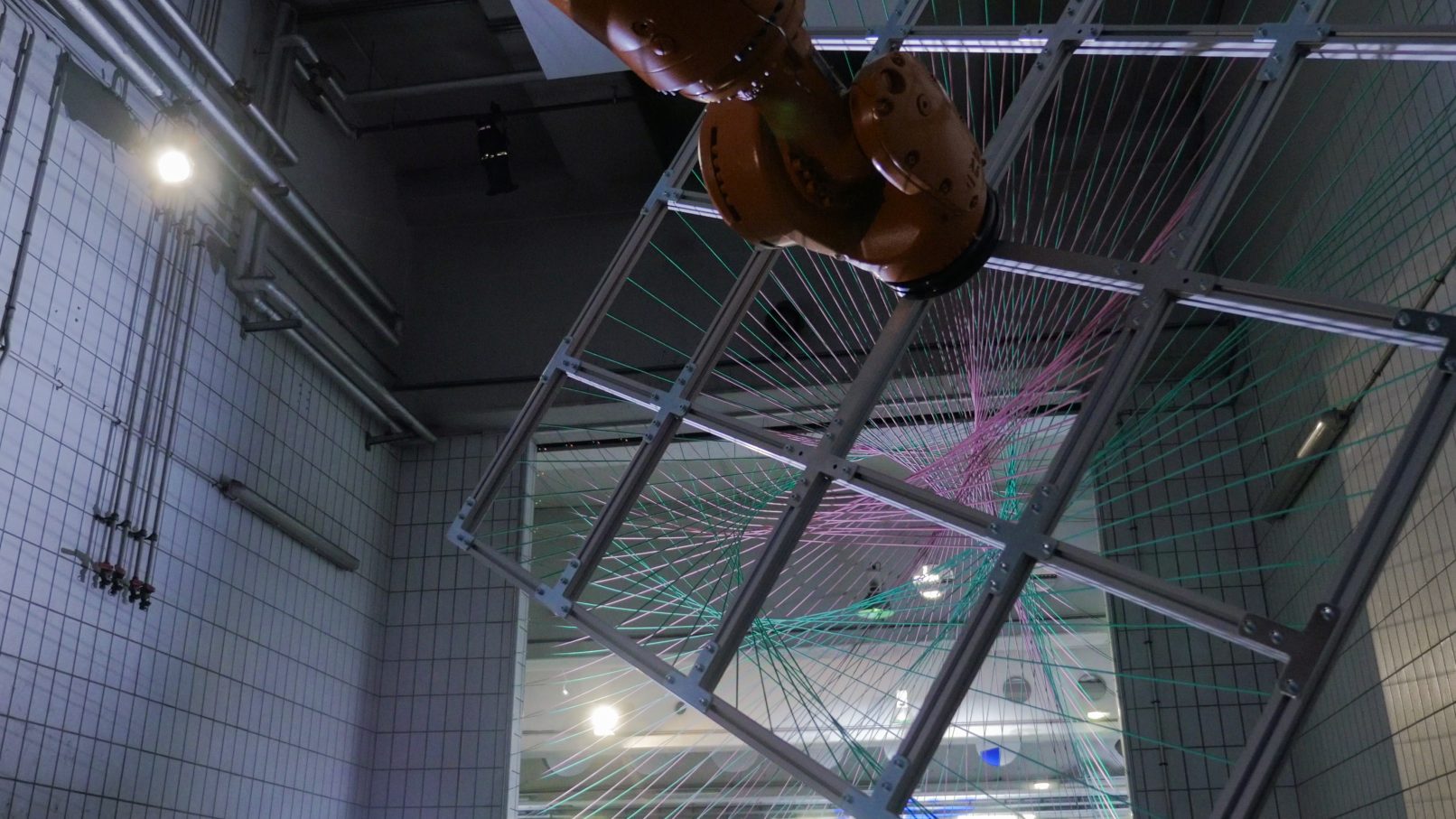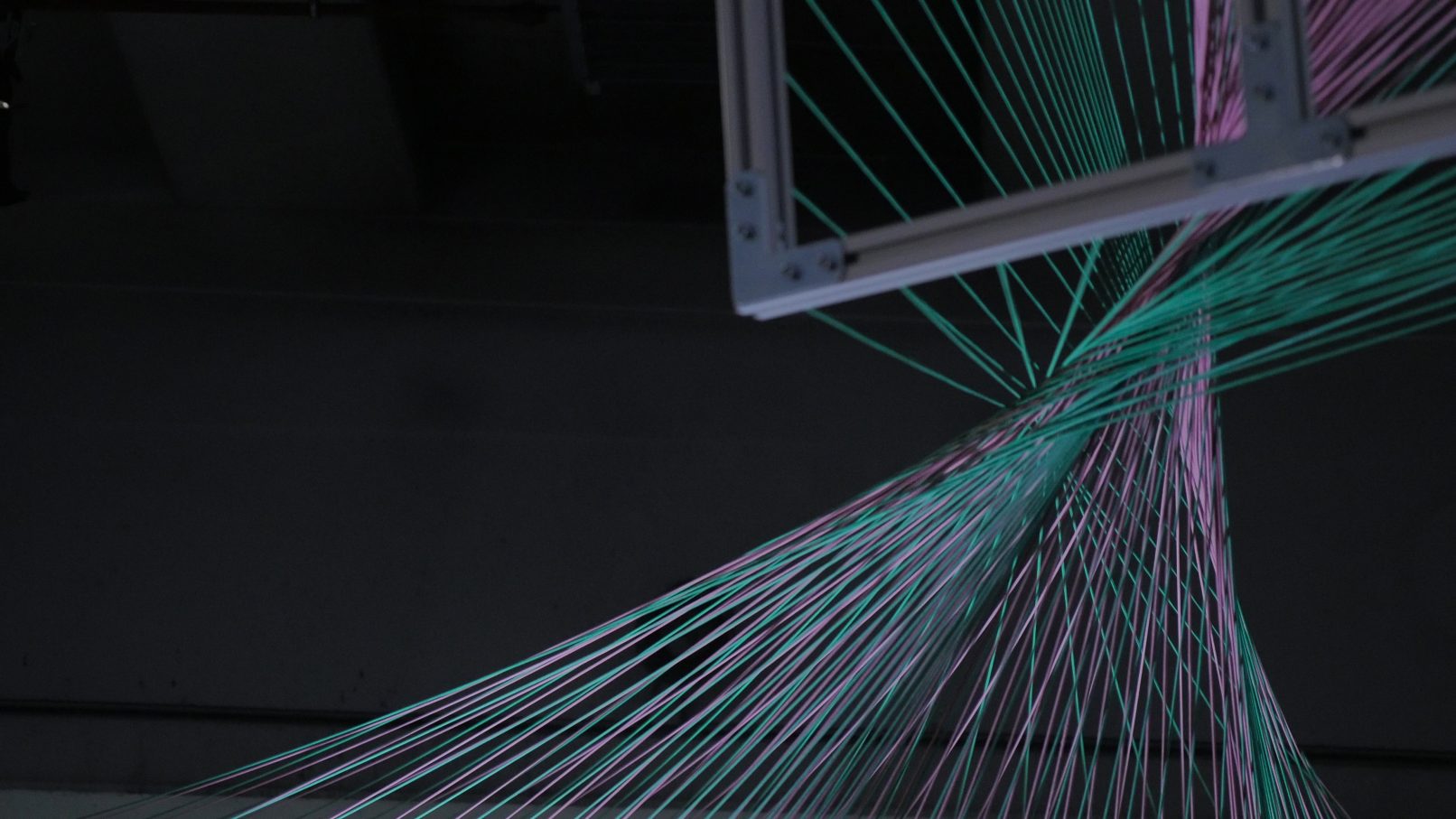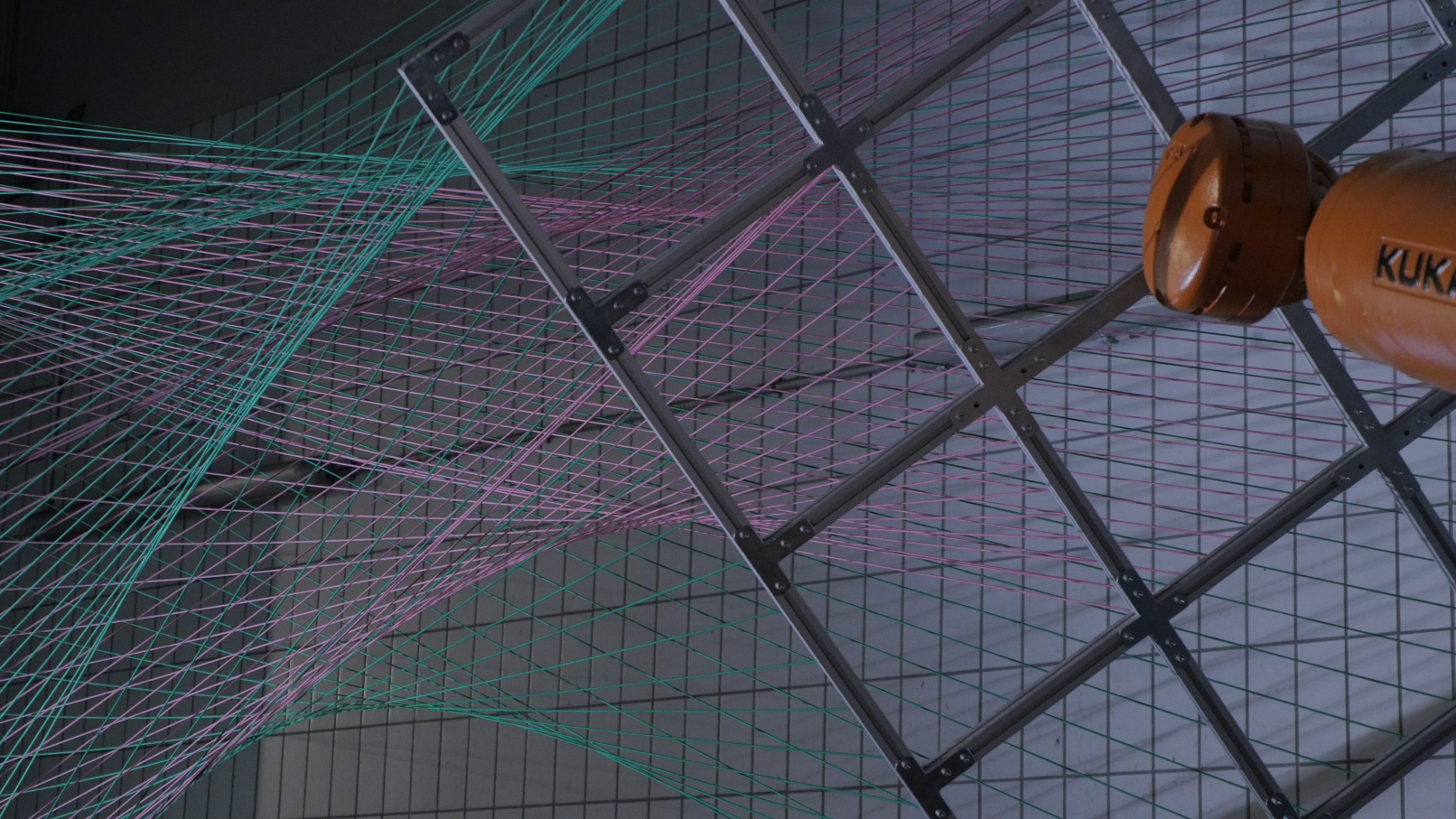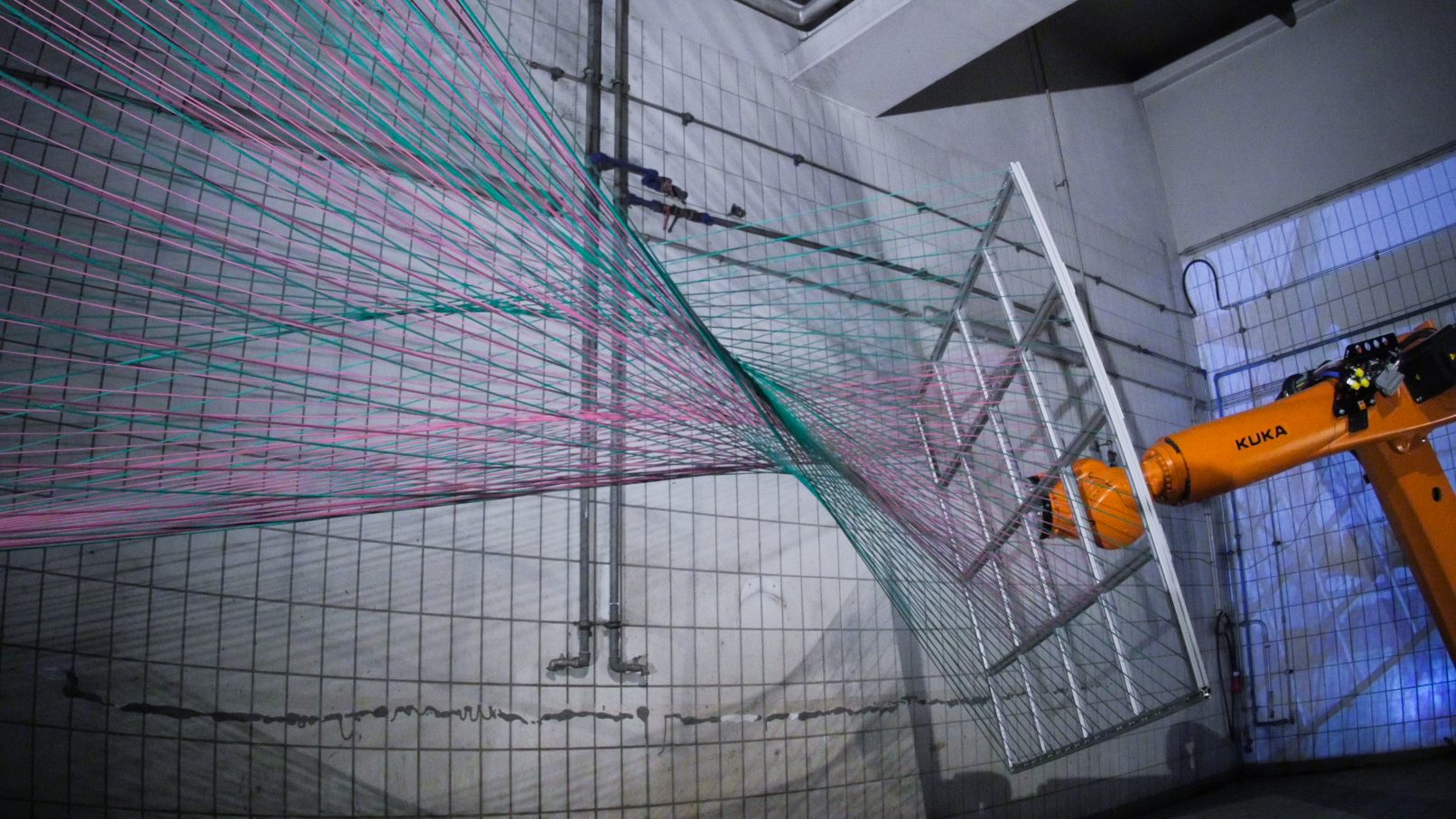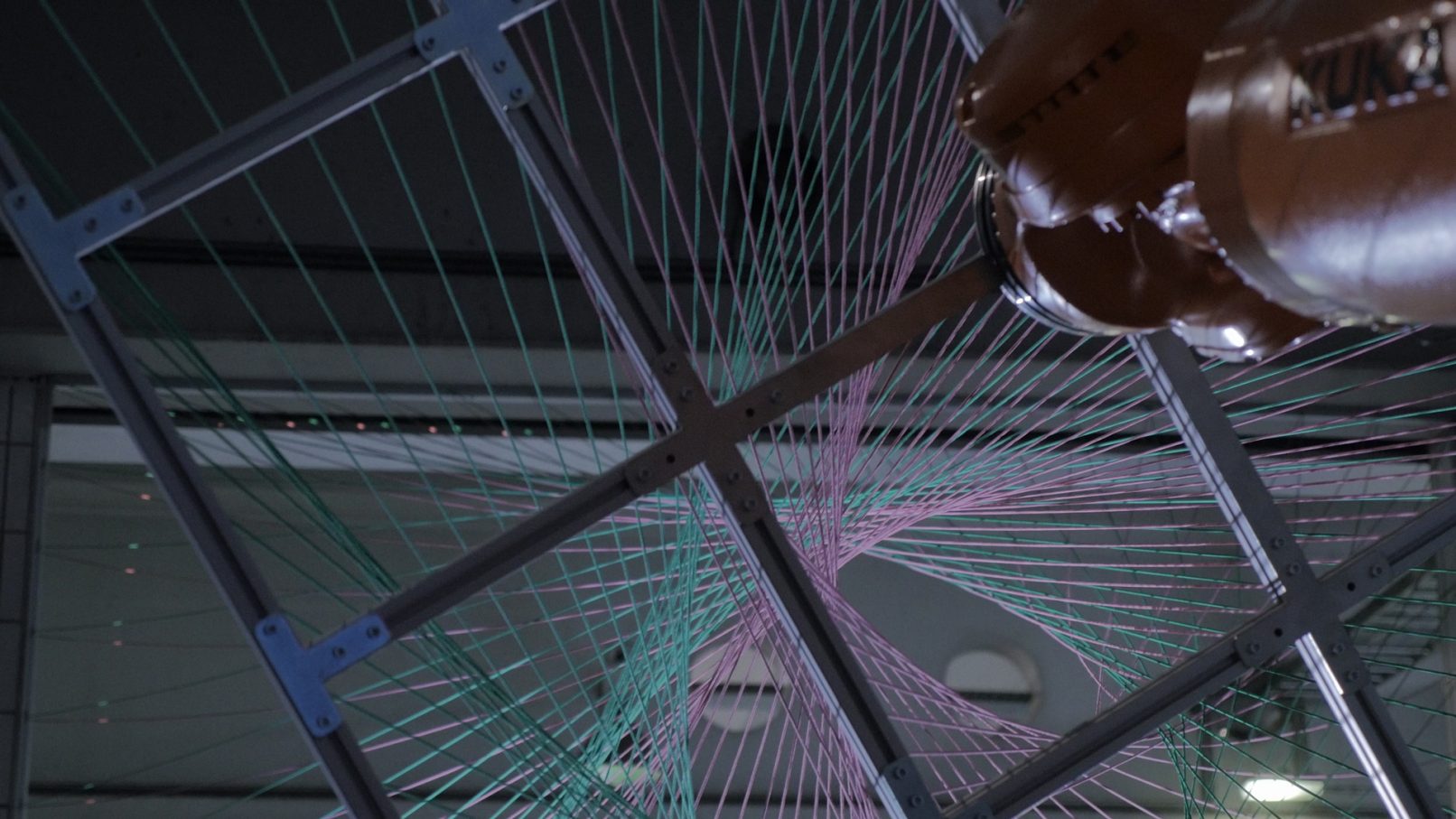Robot, Doing Nothing II
A Robotic Doing Nothing Performance
Robot, Doing Nothing accuses our modern society of being incessantly busy even beyond the confines of everyday life in the workplace. What’s now demanded of us—above all due to the proliferation of digital technologies—is our permanent presence, readiness to communicate and receptivity to information. In response, Emanuel Gollob has created a fictitious scenario: the results of studies demonstrate that the efficiency of our society is enhanced by doing nothing. Based on these studies, Austria’s Ministry of Commerce and Labor decides to remunerate members of the country’s workforce for their inactivity with a minimum wage. To encourage people to get started as professional idlers, roboticinstallations in public spaces are purveyed to the citizenry, whereby observing the changes the machinery’s form constantly undergoes is meant to facilitate the segue into a meditative state of indolence. In this relaxed frame of mind and body, it’s possible to focus on one’s self and open up to sweet stasis.
Robot Doing Nothing was developed by Emanuel Gollob (emanuelgollob.com) together with Johannes Braumann (University of Art and Design Linz, Creative Robotics) and is based on studies that show improved ability of concentration, empathy and creativity when spending time actively doing nothing (Turkle, Sherry (2015): Reclaiming Conversation: The Power of Talk in a Digital Age, Penguin Press). Gollob thinks on a post-industrial future when robots are already part of several aspects in our daily life. At this time the conscious activity of “Doing Nothing” is encouraged by meditative robotic installations in public space.
Sound/Sonification: Michael Schweiger, UFG Soundlabor. Visuals: Chris Noelle, metofa.com. Supported by COPA-DATA GmbH, KUKA Roboter CEE Gmbh and Robots in Architecture.
Robot Doing Nothing uses a KUKA robotic arm Quantec prime with a range of 3.1m. Our robot is controlled in real time by the new KUKA mxAutomation interface and therefore adapts its choreography on the audience interaction immediately. COPA-DATA zenon gives us the possibility to merge the gathered Data from laser scanners and preprogrammed choreography, visualize it and make it through the Microsoft Azure Cloud globally available.
Exhibited from 7th till 11th of September at the Ars Electronica Festival in Linz.
